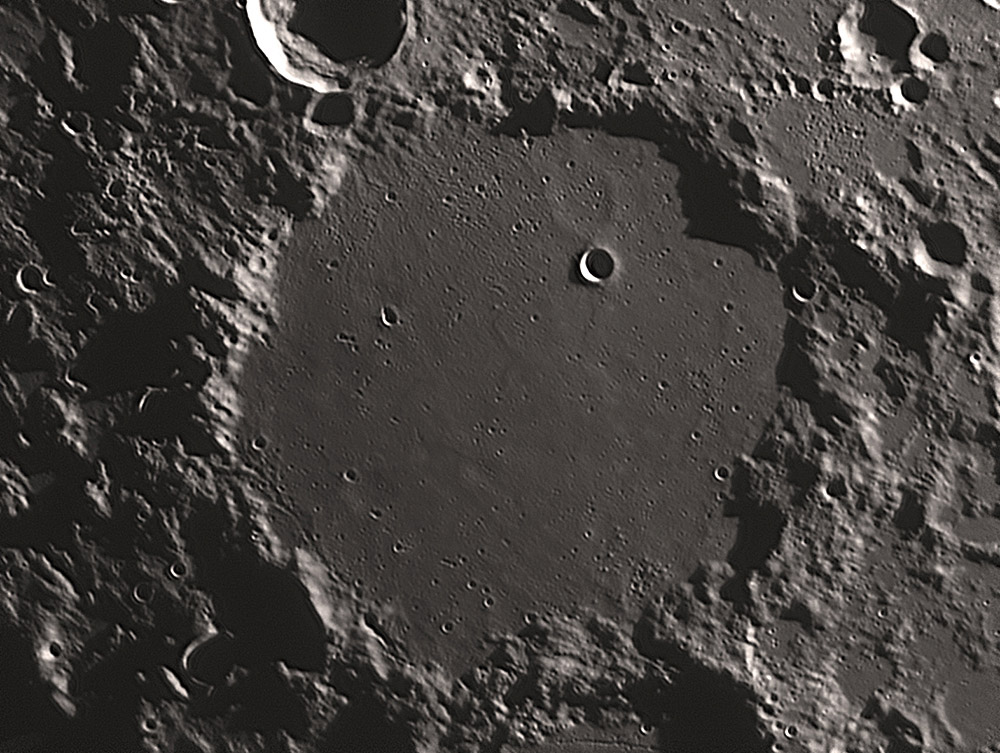July 13, 2013
No

image by Leo Aerts, Belgium
Is Ptolemaeus the most boring crater on the Moon? What makes craters interesting? Some interesting craters are spectacular complex ones with sharp rims, terraced walls and a deep floor with central mountains. Copernicus, Theophilus, Hausen and a number of others qualify. Even more interesting are the variants of the complex crater style called floor-fractured craters. These formed as normal complex craters about 3 billion years ago when lava was still erupting on the Moon. FFC formed near the edge of a mare and at some later time the area under the crater was intruded by rising magma. The magma ponded under the crater, pushing upwards, fracturing the floor and lifting it up like a hydraulic jack. Sometimes a little lava leaked onto the surface, making dark halo craters, domes or rilles. Petavius, Gassendi, Posidonius are favorite examples. FFC are intriguing because of their complexity and the existence of small volcanic features that are often a challenge to see. But there are other interesting craters that don't fit these descriptions. Plato and Ptolemaeus are prime examples. On the face of it these are both plain, older complex craters which have been filled with some material that buried their terraces and peaks, and whose floors are flat, nearly featureless plains. What makes both of these flat floors interesting is the elusive sub-features they contain. Plato has a few 1-2 km wide pits and dozens of smaller ones. Because they are at the limit of resolution they were often poorly observed and hence seemed the change. They didn't, they were and are just small. For Ptolemaeus the elusive features are saucers only glimpsed under a low illumination. Except for Ptolemaeus B, the shallow structure just north of the crisp simple crater Ammonius, saucers are small and quite difficult to detect although imagers have captured some of them. The Sun in Leo's excellent image is somewhat too high to easily see the saucers but does show other elusive features such as the ejecta from Herschel, the old rille-like thing hugging the western wall, and the field of hillocks near the southern margin of the floor. For some craters the elusive is harder to notice, but all have something to search for.
Chuck Wood
NOTE: This is Leo's first submission to LPOD, and he asked, "If you should be interested in other high resolution Moon photographs of this kind, please let me know." I think we would all agree that yes, we want to see more!
Technical Details
February 18th 2013 at 19h02 UT. Celestron 14, red filter and 1.8x barlow
Related Links
21st Century Atlas chart 17.
Yesterday's LPOD: Golden Fractures
Tomorrow's LPOD: Discovery, History And Shadow Drama
COMMENTS?
Register, Log in, and join in the comments.



